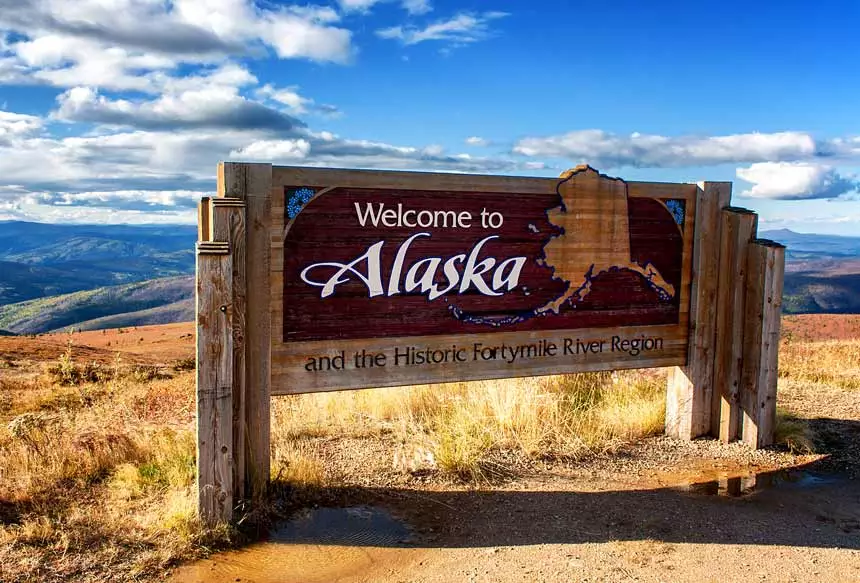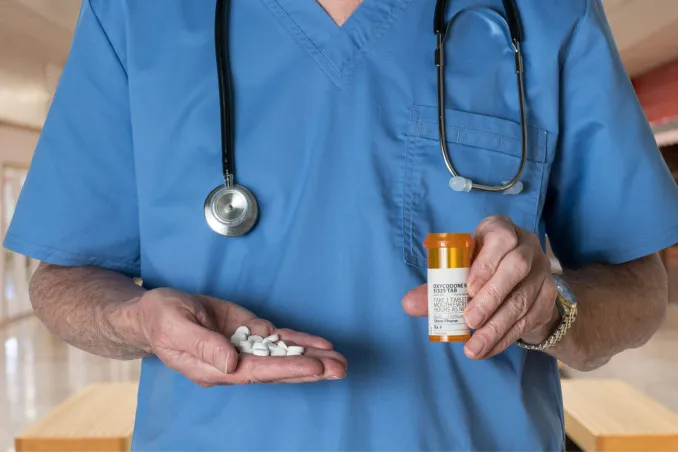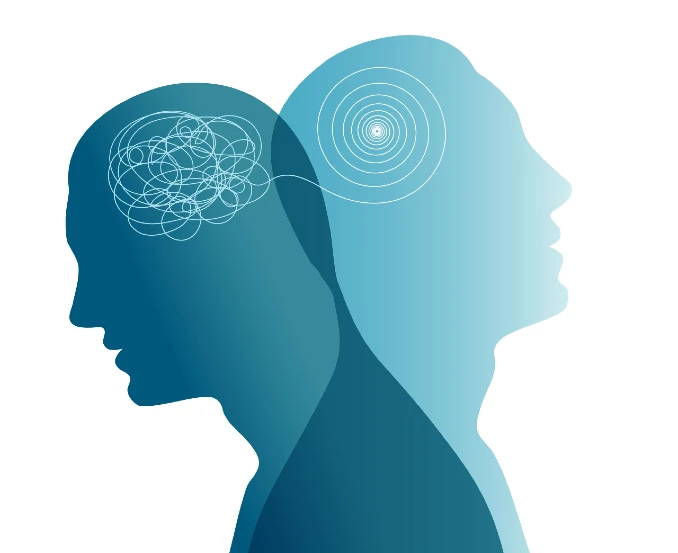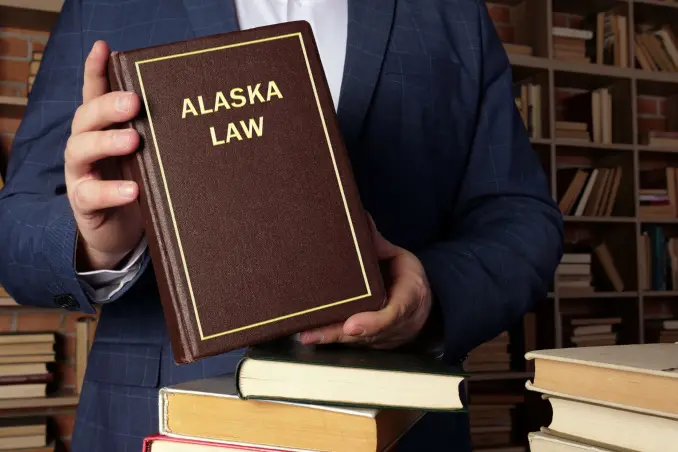Addiction Treatment Centers In Alaska
Alaska may be a remote state located in the United States. However, this has not spared it from dealing with an ever-increasing rise in drug addiction and abuse, and a clear need for Alaska alcohol and drug rehab centers. The drugs in this state are often transported in a concealed fashion, all the way from Mexico, a country famous for numerous drug cartels. Methamphetamine addiction is a serious problem in Alaska, with Matanuska – Susitna being a borough with the highest abuse of methamphetamine.
Between 2008 and 2017, 7,469 Alaskans – 15.88 percent of the state population – died as a result of drugs and alcohol, more than three percentage points more than the national average of 12.71 percent. Fairbanks had the lowest rate of drug- and alcohol-related deaths among Alaska’s top three cities based on the population during that time period, at 14.28 percent, while Juneau had the highest rate, at 18.64 percent. Anchorage came in the middle at 16.32 percent.
This guide was developed to assist the many Alaska people suffering from substance abuse addiction in locating inexpensive treatment that will put them on the road to recovery. It is also meant to educate the public on the hazards of substance usage in Alaska.
If you need assistance finding a rehabilitation center in Alaska, you can utilize our directory and expert advice to discover affordable, high-quality care right away.
Quick Alaska Drug and Alcohol Use Statistics

Alcohol, heroin, meth, prescription drugs, cocaine, and marijuana are the most commonly abused narcotics in Alaska. Many narcotics detected in Alaska are imported from other states via parcel delivery, passenger luggage, and ports of entry. Drug-related criminal behavior is becoming a big worry as a large number of illicit narcotics enter the state. Cocaine and opiates have been related to homicides, assaults, prescription fraud, home invasion thefts, property thefts, and drugstore robberies in various Alaska boroughs. Arrests for drug offenses increased 34.3 percent between 2000 and 2011.
Alaska is currently known as a “marijuana exporting state” following the recreational legalization of marijuana in 2014. Because Alaska has one of the highest marijuana production rates in the country, law enforcement personnel are implementing new efforts to help promote knowledge and keep citizens safe.
Alaska has six schedules for restricted substances: IA, IIA, IIIA, IVA, VA, and VIA. These classifications are based on the severity of each substance’s effects and the risk of addiction.
Key Indicators of Substance Abuse Issues
Researchers and policymakers look at “key indications” while attempting to understand substance addiction issues in a certain location. Key indicators, when combined with usage statistics, can provide a deep level of insight into which substances pose the most serious concerns and which groups are most impacted by substance abuse. Key signs of substance misuse issues in Alaska, as well as recent, verifiable statistics, are discussed below.
Every year, over 15% of Alaskans suffer from mental illness
There is a strong link between substance use problems and mental health illnesses, as addressed earlier in this guide. When a person has both of these concerns at the same time, health professionals refer to it as co-occurring substance use and mental health disorders, sometimes known as a “dual diagnosis.” As a result, the prevalence of mental health difficulties in a specific state might assist us in determining the extent of substance usage.
In 2017-2018, 5.4 percent of Alaska individuals aged 18 and up had a major mental illness, compared to 4.6 percent nationwide. In Alaska, 8.1 percent of adults experienced a major depressive episode in the previous year, compared to 7.1 percent nationally.
Suicide rates in Alaska are much higher than the national average
According to the Centers for Disease Control, suicide is the top cause of death in the United States: From 1999 to 2016, the suicide rate increased in practically every state, with the rate increasing by more than 30 percent in half of the 50 states. Suicide is frequently associated with substance misuse. Substance addiction, according to the United States Department of Health and Human Services, is a primary risk factor for both adults and adolescents who try and/or commit suicide, and this is especially true for at-risk populations.
Furthermore, there is a multifaceted and intricate association between substance misuse and suicide. People who have drug abuse problems are more prone to commit suicide because they have depression, impulsive conduct, and other problems with relationships, finances, disease, or unemployment that make them more likely to kill themselves. Alaska experienced a 37.4 percent growth between 1999 and 2016. Through essential scientific research and swift action, the CDC seeks to safeguard Americans from all domestic and foreign health, safety, and security risks. Alaska ranked second in the country in 2017 for the number of suicides per 100,000 population.
Alaska has a lower opioid prescribing rate than the overall U.S. rate

Prescription medication misuse, particularly opioid abuse, has become a public health crisis in the United States. While it is difficult to estimate how many people use these drugs as prescribed and how many abuse them, the Centers for Disease Control and Prevention has studied the variation in opioid prescriptions across states and found a direct link between an increased level of opioid prescriptions and a higher risk of dependence and abuse. In 2017, physicians wrote 191 million opioid prescriptions in the United States, resulting in one in every four patients who begin long-term opioid therapy developing an addiction.
After peaking in 2012, the opioid prescribing rate in the United States has been steadily declining for several years, owing to the escalation of the opioid epidemic and the realization of the role that excessive opioid prescriptions have played in this pandemic. Between 2013 and 2017, the opioid prescribing rate in the United States fell by 24.84 percent, from 78.1 prescriptions per 100 residents to 58.7 prescriptions per 100 residents.
During that time period, Alaska’s opioid prescribing rate was continuously lower than the national prescribing rate, falling from 63.7 prescriptions per 100 residents in 2013 to 52.0 prescriptions per 100 residents in 2017, demonstrating a still significant, but lesser, decline of 18.37 percent.
Alaska has a much higher rate of homelessness than the national average
A high percentage of homelessness in a community indicates a higher risk of substance misuse problems. Homelessness has been connected to substance misuse as both a cause and a result; some people become homeless as a result of a substance use problem, while others who are already homeless frequently turn to substance use to dull the agony and desperation of their condition.
According to the 2018 Department of Housing and Urban Development (HUD) Point-in-Time Count, there are roughly 552,830 homeless people in the United States, which equates to 17 out of every 10,000 U.S. inhabitants. This figure reflects a 4.1 percent decline from 2014 when the number of homeless people in the United States was around 576,450. Furthermore, homelessness has been reduced by 15% in the United States since 2007, when HUD began collecting data on the homeless population.
In 2018, Alaska had around 2,016 homeless people, which equated to 27 out of every 10,000 Alaska residents and was much higher than the national average. This figure represents a 13% rise over 2014 when Alaska had 1,784 homeless people.
Further Facts on Addiction in Alaska
According to studies, Alaska is well-known for producing high-quality marijuana that is consumed in the state or exported to the rest of the United States. According to recent research and polls:
- According to a White House assessment from 2010 to 2011, Alaska was one of the top ten states in the United States for drug use in numerous categories. These categories include drug use by people aged 12 and up, marijuana use in the previous month among youths and young adults aged 12 and up, and illicit use of non-medical pain relievers.
- Approximately 13.65% of Alaskans reported using illegal substances in the previous month. This was greater than the 8.82 percent national average.
- According to a 2018 survey in Alaska, almost 60% of drug overdose deaths involving opioid use.
- In the same year, Alaska healthcare practitioners wrote 44.9 percent of all opioid prescriptions for every 100 patients.
- Alaska natives had the highest risk of Neonatal Opioid Withdrawal Syndrome (NOWS), with a total of 15.9/1000 births.
Alaska has been ranked among the top states with the highest rates of child abuse, rape, assaults, and accidental deaths, all of which have been connected to drug and alcohol misuse since the 1980s.
- Since 2015, polydrug usage has been prevalent in Alaska. The majority of such users in Alaskan favor the mix of heroin and methamphetamines.
- A news bulletin in July 2015 stated that heroin usage costs Alaska’s healthcare businesses more than $2 million annually.
What to Expect in an Alaska Rehab Setting
There are numerous approaches to treating addiction, and the science of studying addiction is continually developing and changing. However, the fundamental components of rehabilitation are often fairly similar.
Assessment: An addiction evaluation is the first step toward long-term rehabilitation from a substance use disease. Clients entering an addiction treatment clinic must be thoroughly screened before a treatment plan can be developed and therapy can begin. Addiction professionals will conduct a series of questions, and the answers provided by clients will help to shape their treatment plan.
Detox: An inpatient (residential) therapy program often lasts 30, 60, or 90 days. The initial stage of the process for some people engaged in inpatient treatment is medically-assisted detox, which entails eliminating drugs and alcohol from the body under the supervision of medical professionals.
Therapy: Therapy is an effective treatment option since it can be used to address a variety of addictions, including but not limited to food addiction, alcohol addiction, and prescription drug addiction. While any type of drug misuse treatment is preferable to none, group therapy is often favored over individual therapy. You are more likely to be challenged and supported by others who are also going through rehab in group therapy.
Aftercare: Many recovering addicts enroll in some form of an outpatient aftercare program following an inpatient treatment program or a stay at a sober living home. This can include counseling, medication monitoring, therapy, 12-step meetings, or family programs in which family members and loved ones assist an addict in their recovery. Many rehab centers offer some type of aftercare help to clients who have completed a drug or alcohol rehabilitation program, which includes developing a long-term recovery plan.
Why do People Travel to Alaska for Drug and Alcohol Therapy?
Alaska has some of the world’s wildest landscapes, from skimming by freezing glaciers and spectacular mountain peaks to witnessing humpback whales and bears. Alaska’s landscapes stretch from sea to sea, with breathtaking mountain ranges, unusual species, ancient mining towns, vibrant cities, and stunning natural attractions. From May to September, Alaska is crowded with tourists and cruise ships visiting the state’s famous seashore harbors and snow-capped peaks.
America’s largest state has some of the most breathtaking landscapes on the planet, with towering glaciers, mirror-like lakes, fjords, and craggy mountains, as well as crystal-clear seas. I think you’ll be reaching for your camera at every opportunity. It’s no surprise that it’s a popular place for adventure therapy.
Patients who undergo wilderness therapy in Alaska are away from their normal home environment and any negative stimuli to which they are accustomed. This allows them to concentrate on increasing their self-confidence and self-esteem. This will, of course, be a temporary removal. The therapeutic wilderness program for adults allows an adult man or woman’s mind to be awakened by the beauty of nature. They can totally concentrate on the treatment therapy they are receiving because they are no longer influenced by peers, social media, or television. They learn more about themselves and the world around them as they form vital ties with their support staff and peers.
Drug Rehabs in Alaska for At-Risk Groups
Substance Abuse Treatment for Veterans
Veterans confront specific challenges that put them at a higher risk of developing a substance use disorder (SUD) than the general population. The primary cause of this elevated risk is post-traumatic stress disorder (PTSD), but other circumstances such as unemployment, homelessness, and chronic pain can also play a role. Furthermore, those with drug use disorders, especially veterans, are more prone to get PTSD, therefore the problem is cyclical.
According to the National Center for PTSD at the U.S. Department of Veterans Affairs, roughly one in every three veterans seeking treatment for a substance use problem also has a PTSD diagnosis as of early 2019. Similarly, one in every four soldiers who have been diagnosed with PTSD also has a substance use disorder. Furthermore, one in every ten veterans of the conflicts in Iraq and Afghanistan who attend a VA health care institution has a substance use disorder.
There is, however, hope for veterans suffering from a substance use disorder, since they have access to extra options for treatment of a SUD or co-occurring SUD and PTSD, and VA benefits frequently pay the cost of this therapy. Follow these steps to get help with substance abuse treatment from the VA healthcare system:
Enroll: If you are not currently registered, you can find out if you are qualified for VA health benefits and then apply. You might also look into the Alcohol and Drug Dependence Rehabilitation Program of the Department of Veterans Affairs. This program is accessible in VA medical centers and outpatient clinics across the country and offers a number of treatment choices for veterans addicted to drugs and alcohol, including rehabilitation, detoxification, and psychiatric care. To be considered for the program, you must already be enrolled in the VA healthcare system.
Discover: Call or visit your local VA medical institution to see whether they offer substance use disorder (SUD) therapy. If you don’t know where the nearest VA medical center is, you can click here for a thorough search of VA facilities across the country.
Find Treatment: Treatment is provided in Alaska for veterans suffering from a substance use disorder. As of 2017, 12 substance misuse treatment clinics in Alaska catered particularly to veterans, accounting for 13.5 percent of all treatment centers.
Substance Abuse Treatment for Adolescents
Between 2017 and 2018, 7.9 percent of Alaskan teenagers aged 12-17 reported using marijuana in the previous month, far exceeding the national average of 6.6 percent. In terms of alcohol usage, 9 percent of Alaskan adolescents aged 12-17 had engaged in the behavior in the previous month, which is similar to the national average of 9.4 percent. Furthermore, in 2017, 3.5 percent of people enrolled in a substance misuse treatment program in Alaska were aged 12 to 17.
Additional Resources for Parents and Teachers in Alaska
The Alaska Department of Health and Social Services (DHSS) offers several substance abuse services for parents and teachers through the Adolescent Health Program. ‘Alaska’s Strategies to Prevent Underage Drinking’ is a comprehensive guide that provides an overview of underage alcohol usage in Alaska, as well as several prevention and intervention strategies. Furthermore, the fact sheet ‘Get the Facts About Marijuana’ highlights the dangers of adolescent marijuana use, as well as prevention techniques and a list of services to contact for help.
Dual Diagnosis Treatment in Alaska

Substance misuse and mental health problems frequently coexist – the formal phrase is “co-occurring substance use and mental health disorders.” According to the Substance Abuse and Mental Health Services Administration (SAMHSA), 45.6 percent of people with a substance use disorder had a mental health issue in 2017, while 18.3 percent of persons with a mental health disorder had a substance use disorder. In 2017, 35.9% of adolescents with a substance use problem also had a major depressive episode, whereas 10.7% of those with a major depressive episode also had a substance use disorder.
Drug and alcohol abuse are at the surface of much deeper issues that people may be facing in Alaska. It is not strange to find out that many individuals who suffer from the abuse of these substances may be dealing with sexual assault or domestic violence in their various homes, depression, the loss of a family member, mental disorders, panic disorders, and anxiety amongst other issues. This is why most drug and alcohol addiction treatment centers in Alaska provide dual diagnosis treatment. That is the treatment for both the addiction itself as well as the mental elements.
These mental elements could come in the forms of Schizophrenia, anxiety disorders, panic disorders, sleeping disorders, post-traumatic stress disorder (PTSD) as well as obsessive-compulsive disorder (OCD). These treatment centers also treat addiction to alcohol, heroin, marijuana, and cocaine, among other hard drugs.
Alaska Mental Health Resources & Treatment
If you or someone you care about is suffering from a mental health problem, such as depression, PTSD, eating disorders, or severe anxiety, there are numerous options available to assist you.
According to MentalHealth.gov, there’s a variety of methods for immediate assistance:
Emergency Services: If your life (or the life of someone else) is in danger, always contact 911 for quick access to rapid emergency services.
Suicide Prevention: The National Suicide Prevention Lifeline number is 800-273-8255. You can also start a private online chat.
Alaska National Alliance on Mental Illness: Each state’s resources are available on the NAMI website. Go to the Alaska section of the website. This page provides a wealth of resources for people struggling with mental illness, as well as a link to several crisis resources, including the Veterans Crisis Line.
Individuals suffering from both substance abuse and mental health issues may benefit from dual-diagnosis treatment centers. Using the proper filter in our tool above, you can identify rehabilitation centers with treatment programs tailored to the unique challenges offered by co-occurring substance use and mental health disorders.
Finding Addiction Aftercare in Alaska
Substance addiction aftercare treatment is sometimes disregarded, yet it is a critical stage in the rehabilitation process. Individuals who attempt to continue their lives without getting further treatment in an aftercare setting significantly increase their chances of relapsing following rehab. For recovering addicts, several types of aftercare are offered, including follow-up visits for continuous therapy, group therapy, and sober living homes.
According to multiple studies on the topic, long-term engagement with aftercare programs of some kind, as well as sober supports, significantly improves the outcome of rehabilitation efforts.
12-Step Addiction Meetings in Alaska
The 12-step approach was developed by Alcoholics Anonymous (AA) for persons recovering from alcohol addiction, and today there are numerous additional 12-step groups for other addictions and disorders — Narcotics Anonymous (NA) being only one example.
Alaska Sober Living Homes
Sober living houses (also known as recovery residences) are group homes that assist recovering addicts in transitioning from treatment institutions to independent living while maintaining their sobriety. Sober living homes are particularly helpful for people who do not have an appropriate environment for their recovery after leaving a rehabilitation facility.
Residents in sober living homes can stay for a few months to several years if they follow house rules and avoid relapse, as these facilities often have a zero-tolerance drug and alcohol policy. Residents of sober living homes are typically expected to accomplish tasks such as chores, attend peer support groups (either 12 step or otherwise), and contribute the predetermined amount of rent.
What are Drug Use Laws in Alaska?

Because Alaska has a high rate of drug usage and dependency, drug laws for all types of illegal substances are quite harsh. Various scheduled substances and narcotics are classified as criminal offenses under state and federal law, with specific penalties for personal use, sales, cultivation, and other types of possession. Even if one is approved for medicinal marijuana, or consumes it recreationally in the state, it is critical to know the Alaska cannabis and drug statutes.
Furthermore, there are five levels of drug crime in Alaska. An unclassified felony is committed by someone who engages in “misconduct involving a controlled substance in the first degree.” A first-degree drug felony may involve the trafficking of Schedule IA, IIA, or IIIA substances, and the consequences might include a mandatory 99-year jail sentence and a $500,000 fine. Meanwhile, using or carrying a Schedule VA restricted substance is a Class D misdemeanor punishable by a maximum $2,000 fine but not more than 10 days in prison.
Alcohol Laws in Alaska
In Alaska, alcohol laws differ by borough. While some municipalities permit the sale and possession of alcohol, others have restrictions. A dry borough, for example, prohibits both the possession and selling of alcohol. Furthermore, a damp borough limits the amount of alcohol an individual may own and outlaws the sale or distribution of alcohol.
People in so-called ‘damp boroughs’ are permitted to purchase (10) 12 liters of hard liquor every month. This amount includes a monthly purchase restriction of 32 bottles of wine and 12 gallons of beer. Approximately 11% of Alaska’s overall population and 52% of Native Americans reside in damp or dry boroughs. Some people attempt to smuggle alcohol into dry boroughs and sell it at a 100-200 percent profit. This is known as bootlegging, and it is a felony.
No one under the age of 21 may consume, possess, or purchase alcohol in Alaska. Anyone who violates the underage drinking law faces a $600 fine, a three-month driver’s license suspension, and 48 hours of community service.
Finally, driving under the influence is strictly prohibited in Alaska. A repeat DUI offender may face misdemeanor or felony charges, depending on how long ago their prior DUI convictions occurred.
Our phone line is open 24 hours a day, 7 days a week to assist you or a loved one in locating a treatment center that meets your requirements. It simply takes one phone call to begin your new life of recovery.
Marijuana Laws in Alaska
In Alaska, medical marijuana is permitted for the treatment of cancer, epilepsy, HIV/AIDS, multiple sclerosis, glaucoma, and seizures. It is, nevertheless, unlawful to possess more than one ounce of medical marijuana or to use it in public.
In 2014, recreational marijuana became legal in Alaska. However, there are still regulations that restrict marijuana usage and sale, such as:
- Only Alaskans aged 21 and up are permitted to produce or use marijuana.
- No one may have more than one ounce of marijuana on their person.
- It is illegal to smoke marijuana in public in Alaska.
- Driving a car, a snow machine, a boat, or an ATV while under the influence of marijuana is illegal.
- Alaskans are only permitted to own, grow, and distribute up to six cannabis plants. At any given time, only three plants can be mature and blossoming.
- There is no legal way for marijuana or cannabis-based products to leave Alaska.
A person who illegally possesses marijuana or consumes the substance in a public location faces criminal charges.
Addiction Treatment Services in Alaska
Every year, the federal government distributes money to several states in an effort to combat drug abuse. This money is distributed by Alaska through a variety of municipal and state programs, including:
- Drug-free schools
- Community services
- Drug abuse research initiatives
- Block grants for substance abuse prevention and treatment
- Substance abuse and mental health treatments – recovery options
- Substance abuse therapy in a residential setting for state convicts.
Despite the fact that Alaska passed legislation to establish a Prescription Drug Monitoring Program (PDMP), it is not yet completely functioning. Once activated, the application will keep track of prescriptions prescribed by doctors and supplied by pharmacists. This will limit non-medical prescription drug use while also alerting medical practitioners about suspected drug abuse.
Information about the Anchorage Wellness Court
For people charged with misdemeanors, felony DUIs, or felony drug offenses, Anchorage offers two options: jail time or the Anchorage Wellness Court. The Anchorage Wellness Court has several advantages:
- Assessment and treatment for substance abuse.
- Jail time reduced or eliminated (or fines).
- Financial assistance may be available to acquire accommodation.
- Help in obtaining work or job training.
- The opportunity for long-term recovery.
Each program lasts between 12 and 18 months. Participants are given a list of prerequisites that they must follow in order to complete the program successfully. These prerequisites are as follows:
- Attend recovery support groups.
- Undergo alcohol and drug testing.
- Appear frequently for compliance hearings.
- Attend Moral Reconation Therapy (MRT).
- Work or attend school for 16 hours per week (or more)
- Participate in intensive substance abuse treatment.
- Maintain sobriety.
- Follow through with mental health service recommendations.
The Anchorage Wellness Court aims to provide individuals with the tools they need to maintain long-term sobriety and avoid future criminal activity.
Find a Foundation for Recovery from Addiction in Alaska Now

Addiction is difficult for anyone. And it is uncommon for someone to conquer it on their own. Alaska’s drinking restrictions and substance misuse punishments bolster the case for rehabilitation. Support is an essential component of recovery because it keeps you sober when you want to relapse so badly. This is why entering a treatment program can change your life. Getting through the most painful aspects of withdrawal and remaining clean should not be attempted alone. Seek the assistance of our specialists to live a more fulfilling life.
Alaska offers a variety of addiction treatment options, including community-based resources, self-help groups, and public assistance. Substance abuse and mental health treatment, as well as counseling services, are frequently offered at reduced costs in boroughs and areas with behavioral health clinics. Local support groups and faith-based treatment institutes also have relationships with organizations that can help persons in need financially.
While distance and other factors can make it challenging, it is possible to get effective treatment in Alaska. While Alaska may not have the premier drug and alcohol rehabs of California, it does offer possibilities. The first step to achieving this effective treatment is starting with the detoxification of drugs in the system. For additional support, other treatment options include the development of life skills and counseling from professional therapists in this field. Perhaps the best form of support we can offer is around-the-clock, expert advice from our addiction hotline, don’t hesitate to reach out now and we will do our utmost to help you find treatment in Alaska or nationwide.
Traveling Out of State for Treatment as an Alaska Resident
Going to an out-of-state rehab facility is another alternative for addiction therapy. If you’re seeking a good program, the best option might not be in your own state, especially if you are an Alaska resident in certain more remote areas. Out-of-state treatment centers not only help you get away from triggers and toxic connections, but they also have a 12 percent higher completion rate than in-state treatment clinics.
Call now to speak with a Find Addiction Rehabs recovery representative to learn more about your addiction treatment choices in Alaska or to locate a rehab clinic that accepts your insurance and is at accredited facilities out of state. With same-day placement possible, give yourself a break, and reach out today for assistance.

